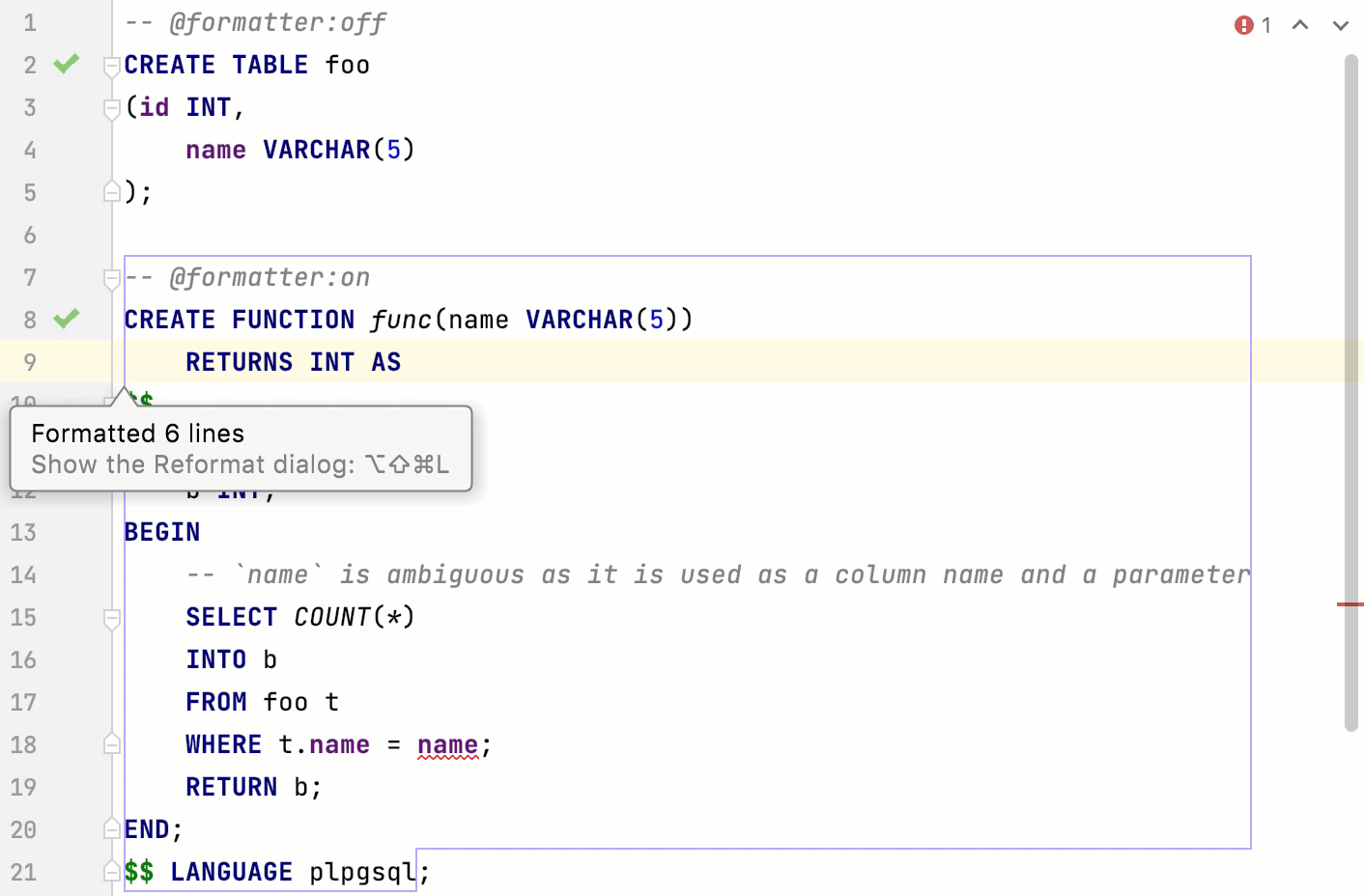Reformat and rearrange code
DataGrip lets you reformat your code according to the requirements you've specified in your current code style scheme or the .editorconfig file. If anything is not defined in .editorconfig, it's taken from the project settings.
You can reformat a part of code, the whole file, group of files, a directory, and a module. You can also exclude part of code or some files from the reformatting.
Reformat a code fragment
In the editor, select a code fragment you want to reformat.
Before reformatting, you can take a look at the code style settings that are applied to the selected code: press Alt+Enter and click Adjust code style settings.
From the main menu, select or press Control+Alt+L.
Reformat a file
Either open your file in the editor and press Control+Alt+Shift+L or in the Project tool window, right-click the file and select .
In the Reformat File dialog that opens, if you need, select the following reformatting options:
Code cleanup: select this option to run the code cleanup inspections.
Do not keep line breaks: reformat line breaks according to the code style settings. This option overrides the setting.
Click Run.
If you want to see the exact changes made to your code during the reformatting, use the Local History feature.
Reformat line indents
You can reformat line indents based on the specified settings.
While in the editor, select the necessary code fragment and press Control+Alt+I.
If you need to adjust indentation settings, in the Settings dialog (Control+Alt+S), go to .
On the appropriate language page, on the Tabs and Indents tab, specify the appropriate indents options and click OK.
Automatically reformat code on save
You can configure the IDE to reformat code in modified files automatically when your changes are saved.
Press Control+Alt+S to open the IDE settings and select .
Enable the Reformat code option.
Additionally, you can configure the way the IDE will reformat your code:
Click Configure scope to specify the patterns of filenames and directories that you want to exclude from reformatting.
From the All file types list, select the types of files in which you want to reformat code.
Select Whole file or Changed lines if your project is under version control.
If you select Changed lines, reformatting will apply only to the lines of code that have been changed locally, but not yet checked in to the repository.
Exclude files from reformatting
You can exclude a group of files and directories from reformatting and import optimization.
In the Settings dialog (Control+Alt+S), go to .
Switch to the Formatter tab and in the Do not format field, enter the files and directories that you want to exclude using a glob pattern.
You can specify several glob patterns separated with a semicolon
;. If you click , the field will expand, and each pattern will be shown on a separate line.
, the field will expand, and each pattern will be shown on a separate line.Apply the changes and close the dialog.

Exclude code fragments from reformatting in the editor
In the Settings dialog (Control+Alt+S), go to .
Switch to the Formatter tab and enable the Turn formatter on/off with markers in code comments option.
In the editor, at the beginning of a region that you want to exclude, create a line comment Control+/ and type
@formatter:off. At the end of the region, create another line comment and type@formatter:on.The code between the markers won't be reformatted.
